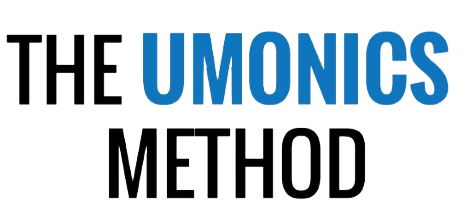
Unlocking the Power of Early Literacy Instruction for Preschoolers
Introduction:
In the journey of a preschooler’s education, one of the most critical skills they acquire is literacy. Early literacy instruction lays the foundation for a lifetime of learning, exploration, and self-expression. By nurturing a love for reading and providing effective instruction, we can unlock the tremendous potential within preschoolers, equipping them with the tools to succeed academically and beyond. This article explores the importance of early literacy instruction and offers practical strategies to support preschoolers’ literacy development.
The Building Blocks of Literacy:
Literacy encompasses various aspects, including reading, writing, speaking, and listening. Early literacy instruction focuses on developing these fundamental skills, ensuring that preschoolers possess a solid foundation for future academic success.
Phonemic Awareness:
Phonemic awareness, the ability to recognize and manipulate individual sounds in words, is a crucial skill for early readers. Through engaging activities such as rhyming games, sound blending exercises, and wordplay, preschoolers develop an understanding of the sounds that make up words. This awareness forms the basis for decoding and spelling words, laying the groundwork for reading and writing proficiency.
Print Awareness:
Print awareness refers to a preschooler’s understanding of the form and function of printed language. Introducing preschoolers to concepts such as letters, words, sentences, and the organization of text on a page helps them develop print awareness. Reading aloud, pointing out words in the environment, and exploring books together are effective strategies to enhance print awareness and foster a love for reading.
Vocabulary Development:
Expanding a preschooler’s vocabulary is essential for comprehension and effective communication. Through exposure to rich language experiences, including conversations, read-alouds, and interactive activities, preschoolers develop a robust vocabulary. Engaging in discussions, asking open-ended questions, and introducing new words within context enriches their vocabulary and enhances their ability to express themselves verbally and in writing.
Fluency and Comprehension:
Fluency involves reading with accuracy, appropriate speed, and expression. Comprehension, on the other hand, encompasses the understanding and interpretation of written text. Guided reading sessions, repeated reading exercises, and comprehension-focused discussions support the development of fluency and comprehension skills in preschoolers. By providing opportunities for them to engage with a variety of texts, we encourage critical thinking, deepen understanding, and foster a lifelong love for reading.
Strategies for Effective Early Literacy Instruction:
To provide effective early literacy instruction, educators can employ a range of strategies that engage and captivate preschoolers’ minds. By incorporating these strategies into daily instruction, we can create a supportive and stimulating learning environment.
Interactive Read-Alouds:
Interactive read-alouds involve teachers reading aloud to preschoolers while actively engaging them in discussions and activities related to the text. This strategy not only enhances vocabulary development but also promotes comprehension skills, critical thinking, and a deeper understanding of story elements. Through open-ended questions, predictions, and connections to personal experiences, preschoolers actively participate in the reading process, making it a truly interactive and enriching experience.
Phonics Instruction:
Phonics instruction focuses on teaching the relationship between letters and sounds, enabling preschoolers to decode and spell words. Engaging in multisensory activities, such as letter-sound matching games, word-building exercises, and kinesthetic experiences, reinforces phonics skills. By providing explicit instruction and ample practice opportunities, preschoolers develop the necessary phonetic knowledge to become proficient readers and writers.
Scaffolded Writing:
Scaffolded writing involves gradually guiding preschoolers through the writing process, providing support and feedback at each stage. Starting with drawing and dictation, preschoolers progress to writing simple sentences and eventually constructing coherent paragraphs. Through modelling, shared writing experiences, and individual practice, preschoolers gain confidence in their writing abilities and develop important skills such as letter formation, sentence structure, and punctuation.
Literacy-Rich Environment:
Creating a literacy-rich environment is crucial for fostering a love for reading and writing. A well-designed classroom or learning space should include a variety of books, writing materials, and literacy-themed displays. The presence of print in the environment, such as labels, signs, and word walls, encourages preschoolers to interact with written language and reinforces their understanding of print concepts.
Individualized Instruction:
Recognizing that each preschooler progresses at their own pace, individualized instruction plays a vital role in early literacy development. Assessing preschoolers’ skills and tailoring instruction to meet their needs ensures that they receive targeted support and appropriate challenges. Small-group instruction, one-on-one conferences, and differentiated activities cater to the diverse needs of preschoolers, allowing for personalized growth and progress.
Early literacy instruction lays the groundwork for a lifetime of learning and success for preschoolers. By fostering phonemic awareness, print awareness, vocabulary development, fluency, and comprehension skills, we empower preschoolers to become confident, proficient readers and writers. Implementing effective strategies, such as interactive read-alouds, phonics instruction, scaffolded writing, and creating a literacy-rich environment, supports their literacy journey and ignites a lifelong passion for learning through literacy. Let us continue to prioritize early literacy instruction, providing preschoolers with the tools and opportunities they need to unlock their full potential and embark on a lifelong adventure of exploration and expression through the written word.
Expanding the Reach of Early Literacy Instruction: Embracing Technology and Home-School Collaboration
Introduction:
In the digital age, early literacy instruction can be further enhanced by embracing technology and fostering strong home-school collaboration. By incorporating digital resources and tools into instruction and actively involving parents and caregivers in the literacy journey, we can broaden the impact and effectiveness of early literacy instruction for preschoolers. This article explores the role of technology and home-school collaboration in expanding the reach of early literacy instruction.
Harnessing the Power of Technology:
Technology offers a wealth of resources and opportunities to support early literacy instruction. When used appropriately and intentionally, technology can engage preschoolers, enhance learning experiences, and provide access to a wide range of literacy materials and activities.
Educational Apps and Websites:
There is a plethora of educational apps and websites specifically designed to support early literacy development. These interactive platforms provide engaging activities, phonics games, e-books, and interactive storytelling experiences. Through these digital resources, preschoolers can practice phonemic awareness, letter recognition, and vocabulary development in an interactive and captivating manner.
Digital Storytelling:
Digital storytelling tools enable preschoolers to create and share their own stories using multimedia elements. These platforms allow them to develop their creativity, language skills, and sequencing abilities while fostering a love for storytelling and self-expression. Preschoolers can narrate their stories, add illustrations, and even incorporate audio or video elements, creating a unique and engaging digital narrative.
Virtual Field Trips and Author Visits:
Virtual field trips offer preschoolers the opportunity to explore different environments and engage with real-world literacy experiences. They can virtually visit libraries, museums, or even author presentations, expanding their understanding of the world and the role of literacy within it. Additionally, inviting authors to conduct virtual visits or share pre-recorded readings and discussions exposes preschoolers to diverse literature and introduces them to the creative minds behind their favorite books.
Home-School Collaboration:
To maximize the impact of early literacy instruction, strong collaboration between educators and parents or caregivers is crucial. By involving families in the literacy journey, we can reinforce and extend the learning that takes place within the classroom, creating a seamless connection between home and school.
Parent Workshops and Training:
Providing workshops and training sessions for parents and caregivers equips them with strategies and resources to support their preschoolers’ literacy development at home. These sessions can cover topics such as reading aloud, creating a literacy-rich environment, and fostering a love for books. By empowering parents and caregivers with knowledge and tools, we strengthen the partnership between home and school, ensuring a cohesive and supportive approach to early literacy instruction.
Home Literacy Activities:
Encouraging parents and caregivers to engage in home literacy activities with their preschoolers enhances the learning experience beyond the classroom. Suggestions for activities can include reading together, storytelling, word games, or writing letters or notes. By integrating literacy activities into daily routines, such as labeling items in the home or involving preschoolers in grocery list-making, we create meaningful opportunities for literacy practice and reinforcement.
Family Reading Programs:
Implementing family reading programs can foster a culture of reading within the home and promote family engagement in literacy. Programs such as shared reading challenges, book clubs, or reading logs can encourage regular reading habits and provide opportunities for discussion and reflection. By celebrating and recognizing family reading achievements, we further motivate preschoolers and their families to prioritize literacy as a shared experience.
Communication and Collaboration Platforms:
Digital platforms, such as email, messaging apps, or online platforms, facilitate ongoing communication and collaboration between educators and families. Sharing resources, providing suggestions for literacy activities, and updating families on classroom learning allow for continuous support and reinforcement of early literacy skills. Regular communication ensures that parents and caregivers are aware of the instructional focus and can actively participate in their preschoolers’ literacy journey.
Expanding the reach and impact of early literacy instruction requires embracing technology and fostering strong home-school collaboration. By harnessing the power of educational apps, digital storytelling tools, and virtual experiences, we can engage preschoolers in interactive and meaningful literacy activities. Additionally, involving parents and caregivers through workshops, home literacy activities, and family reading programs strengthens the partnership between home and school, ensuring a cohesive and supportive approach to early literacy development. Let us embrace the possibilities that technology offers and nurture a collaborative environment where preschoolers can thrive as confident and enthusiastic readers and writers.
Inclusive early literacy instruction recognizes and celebrates the diversity of preschoolers, embracing their unique backgrounds, experiences, and identities. By fostering an inclusive learning environment and incorporating diverse literature, we can empower preschoolers to develop a deep appreciation for different perspectives and cultures, promoting empathy, understanding, and a sense of belonging. This article explores the importance of diversity and inclusion in early literacy instruction and offers practical strategies to create an inclusive literacy experience for all preschoolers.
Representation in Literature:
A key aspect of inclusive early literacy instruction is the inclusion of diverse literature that reflects the experiences and backgrounds of all preschoolers. It is essential to provide a range of books that feature protagonists from different races, ethnicities, genders, abilities, and family structures. This representation allows preschoolers to see themselves in the stories and characters they encounter, fostering a sense of identity, pride, and connection.
By offering books that depict a variety of cultures, traditions, and languages, we expose preschoolers to the richness of the world and encourage them to appreciate and respect different perspectives. Incorporating bilingual or multilingual books can also promote language development and inclusivity for preschoolers who speak languages other than English.
Culturally Responsive Teaching:
Culturally responsive teaching acknowledges and incorporates the cultural backgrounds and experiences of preschoolers into the instructional practices. It involves valuing and respecting the cultural diversity within the classroom and creating opportunities for preschoolers to share their traditions, stories, and languages.
Incorporating culturally relevant texts, songs, and activities allows preschoolers to see their cultures represented and celebrated. Teachers can invite families to share stories or artifacts from their cultures, invite guest speakers from diverse backgrounds, or organize cultural celebrations and events. These experiences not only validate the identities of preschoolers but also foster a sense of pride, respect, and curiosity about different cultures.
Inclusive Classroom Environment:
Creating an inclusive classroom environment goes beyond the selection of literature. It involves creating a safe and supportive space where all preschoolers feel valued, respected, and included. Educators can:
Responsive and Differentiated Instruction:
Inclusive early literacy instruction recognizes that preschoolers have different abilities, learning styles, and needs. To ensure that all preschoolers can actively participate and thrive in the literacy classroom, educators should provide responsive and differentiated instruction.
This can include:
Flexible grouping: Group preschoolers based on their strengths and needs, allowing for targeted instruction and peer collaboration.
Multisensory activities: Engage preschoolers in activities that appeal to different learning styles, such as visual, auditory, and kinesthetic activities.
Varied instructional materials : Provide a range of resources, including tactile materials, visual aids, and audio recordings, to cater to diverse learning preferences.
Individualized support: Offer one-on-one support or small-group instruction for preschoolers who require additional assistance or extension activities.
Family and Community Engagement:
To create a truly inclusive learning environment, it is crucial to involve families and the broader community in the literacy journey of preschoolers. By valuing and incorporating their perspectives, languages, and traditions, we foster a sense of belonging and strengthen the connections between home, school, and community.
Educators can:
Establish open lines of communication with families, encouraging their input and involvement in the curriculum and instructional decisions. Organize family literacy events, where families can participate in shared reading activities, storytelling, or cultural celebrations. Collaborate with community organizations and cultural institutions to provide authentic literacy experiences, such as field trips to libraries, museums, or local cultural events. Provide resources and workshops for families on supporting early literacy development at home, including suggestions for diverse books and activities.
Conclusion:
Inclusive early literacy instruction embraces the diversity of preschoolers and celebrates their unique backgrounds and identities. By incorporating diverse literature, fostering a culturally responsive classroom environment, providing differentiated instruction, and engaging families and the community, we create a space where all preschoolers feel seen, heard, and valued. Let us strive to create inclusive literacy experiences that empower preschoolers to embrace their own identities, appreciate the beauty of diversity, and become active contributors to a more inclusive and equitable society.


